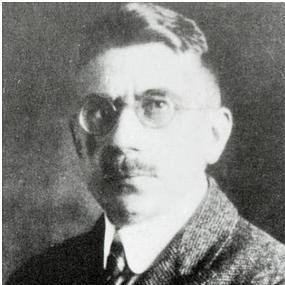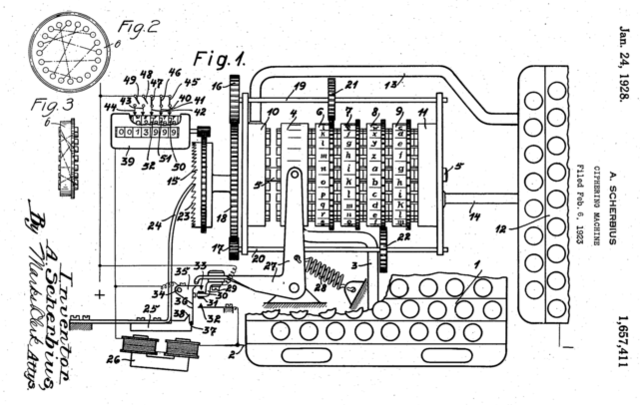Creating the Barrier
"It would take twice the age of the universe to break the code"
Ralph Simpson, Retired Computer Expert and Enigma Historian.

“Arthur Scherbius, Enigma Machine Inventor.” June 10, 1913
Source: sciencesource.com
“The Germans recognized when they were constructing (in their view) an invulnerable set of machines, that of course in wartime they would be open to capture and therefore locally and temporarily they would be read. But they also felt that the mere local (by which I mean reading one key instead of another key) and temporary reading (in other words that would complete your fundamental knowledge of the machine) wouldn't help you to read it regularly and daily. And they were right... that would have been impossible.”
-Sir Harry Hinsley, Historian, Codebreaker at Bletchley Park during WWII
At the end of WWI, German inventor Arthur Scherbius created the Handelsmachine, a rotor-based cipher machine that created extremely complicated codes. This apparatus went through various advancements until becoming the Enigma in 1923. Confident the various Enigma machines would allow for shielded, clear communication, each branch of the Axis militaries used these devices during WWII to encode communications into an “unbreakable” code. This kept vital military information from their enemies, and though at times during WWII Germany suspected Enigma materials had been captured, Germany maintained that the Enigma code was an impenetrable barrier.
"The total number of ways in which the Enigma machine can be configured for any particular message is 150,000,000,000,000. So it was an enormous complexity which was why the Germans thought it was completely safe."
-Tony Sale, British electronic engineer, computer programmer, computer hardware engineer, and historian of computing

"Scherbius' Ciphering Machine" January 24, 1928
Source: patents.google.com
Personal Interview with Jack Copeland, Director of the Turing Archive